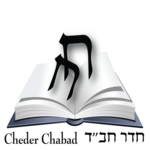The name of the Parshah, "Terumah," means "Offering" and it is found in Exodus 25:2.
The people of Israel are called upon to contribute thirteen materials—gold, silver and copper; blue-, purple- and red-dyed wool; flax, goat hair, animal skins, wood, olive oil, spices and gems—out of which, G‑d says to Moses, “They shall make for Me a Sanctuary, and I shall dwell amidst them.”
On the summit of Mount Sinai, Moses is given detailed instructions on how to construct this dwelling for G‑d so that it could be readily dismantled, transported and reassembled as the people journeyed in the desert.
In the Sanctuary’s inner chamber, behind an artistically woven curtain, was the ark containing the tablets of the testimony engraved with the Ten Commandments; on the ark’s cover stood two winged cherubim hammered out of pure gold. In the outer chamber stood the seven-branched menorah, and the table upon which the “showbread” was arranged.
The Sanctuary’s three walls were fitted together from 48 upright wooden boards, each of which was overlaid with gold and held up by a pair of silver foundation sockets. The roof was formed of three layers of coverings: (a) tapestries of multicolored wool and linen; (b) a covering made of goat hair; (c) a covering of ram and tachash skins. Across the front of the Sanctuary was an embroidered screen held up by five posts.
Surrounding the Sanctuary and the copper-plated altar which fronted it was an enclosure of linen hangings, supported by 60 wooden posts with silver hooks and trimmings, and reinforced by copper stakes.
Learn: Terumah in Depth
Browse: Terumah Parshah Columnists
Prep: Devar Torah Q&A for Terumah
Read: Haftarah in a Nutshell
Play: Terumah Parshah Quiz


Join the Discussion